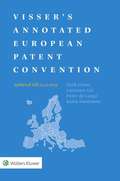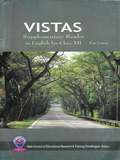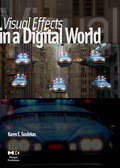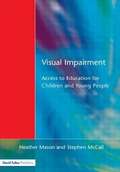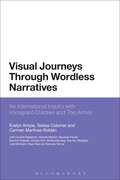- Table View
- List View
Visser's Annotated European Patent Convention 2019 Edition
by Derk VisserThe book Visser’s Annotated European Patent Convention is a commentary on the European Patent Convention and a bestseller in European patent law. Each year a new, updated edition of the book is published and available in paperback form. The 2019 edition of this preeminent work – the only regularly updated authoritative article-by-article commentary in English on the European Patent Convention (EPC), its implementing regulations, and associated case law – provides the complete text of the 2000 Convention annotated with commentary and expert guidance on the interpretation of each paragraph. Since its first edition in 1994 it has provided the European patent community with the necessary insights to practice successfully before the European Patent Office. The EPO recommends the Visser’s Annotated European Patent Convention as the first book in its list of non-EPO/WIPO literature to be used for the preparation of the European qualifying examination. In addition to a thorough updating of developments, new material in this edition includes the following: New Rules of Procedure of the Boards of Appeal; New EPO Guidelines that enter into force on 01.11.2019; The references to Guidelines 2018 are kept for the eqe 2020 candidates.
Vistas Supplementary Reader (Core Course) class 12 - S.C.E.R.T Raipur - Chhattisgarh Board
by Rajya Shaikshik Anusandhan Aur Prashikshan Parishad Raipur C. G.This book prescribed by central board of secondary education, India for the students of class 12th subject English. This accessible version of the book doesn't leave any part of the book. The book is handy companion of the school going students.
Visual Alchemy: The Fine Art Of Digital Montage
by Catherine McIntyreCatherine McIntyre, like many fine artists, created traditional art for decades before encountering the versatility of digital imaging technology. Free of her Rotring pens and scalpel, she now uses Photoshop to create her montages. Visual Alchemy explores McIntyre’s sources of inspiration as well as her methods, offering an aesthetic guide to composition, color, texture and all of the other means of communication that artists have at their disposal. While these concepts and techniques make use of Photoshop, they will apply to any digital imaging program and indeed to any medium, whether traditional or digital. Featuring McIntyre’s own art as well as that of artists around the globe, Visual Alchemy is an invitation to discover the artistic possibilities of picture making through digital montage.
Visual Alchemy: The Fine Art of Digital Montage
by Catherine McIntyreCatherine McIntyre, like many fine artists, created traditional art for decades before encountering the versatility of digital imaging technology. Free of her Rotring pens and scalpel, she now uses Photoshop to create her montages. Visual Alchemy explores McIntyre’s sources of inspiration as well as her methods, offering an aesthetic guide to composition, color, texture and all of the other means of communication that artists have at their disposal. While these concepts and techniques make use of Photoshop, they will apply to any digital imaging program and indeed to any medium, whether traditional or digital. Featuring McIntyre’s own art as well as that of artists around the globe, Visual Alchemy is an invitation to discover the artistic possibilities of picture making through digital montage.
Visual and Cultural Identity Constructs of Global Youth and Young Adults: Situated, Embodied and Performed Ways of Being, Engaging and Belonging (Routledge Research in Cultural and Media Studies)
by Fiona BlaikieThis collection brings together the ideas of key global scholars focusing on the lives of youth and young adults, examining their visual and cultural identity constructs. Embracing an international perspective encompassing the Global North and Global South, chapters explore expressions and performances of youth and young adults as shifting and entangled, in and through the clothed body, gender, sexuality, race, artistic and pedagogical making practices, in spaces and places, framed by new materialism, social media, popular and material culture. The overarching emphasis of the collection is on youth and young adults’ strategies for engaging in and with the world, becoming a someone, and belonging, in settings that include a juvenile arbitration program, an artist community, high schools, universities, families and social media. This truly interdisciplinary and international collection will have resonance not just within cultural and media studies, but also in education, anthropology, sociology, gender studies, child and youth studies, visual culture, and communication studies.
Visual and Cultural Identity Constructs of Global Youth and Young Adults: Situated, Embodied and Performed Ways of Being, Engaging and Belonging (Routledge Research in Cultural and Media Studies)
by Fiona BlaikieThis collection brings together the ideas of key global scholars focusing on the lives of youth and young adults, examining their visual and cultural identity constructs. Embracing an international perspective encompassing the Global North and Global South, chapters explore expressions and performances of youth and young adults as shifting and entangled, in and through the clothed body, gender, sexuality, race, artistic and pedagogical making practices, in spaces and places, framed by new materialism, social media, popular and material culture. The overarching emphasis of the collection is on youth and young adults’ strategies for engaging in and with the world, becoming a someone, and belonging, in settings that include a juvenile arbitration program, an artist community, high schools, universities, families and social media. This truly interdisciplinary and international collection will have resonance not just within cultural and media studies, but also in education, anthropology, sociology, gender studies, child and youth studies, visual culture, and communication studies.
Visual and Performing Arts Collaborations in Higher Education: Transdisciplinary Practices (The Arts in Higher Education)
by Julia Listengarten Keri WatsonThis book examines the role of the visual and performing arts in higher education and argues for the importance of socially engaged transdisciplinary practices, not just to the college curriculum but also to building an informed and engaged citizenry. The first chapter defines and offers an outline for conducting transdisciplinary research. Chapters two through five present examples of transdisciplinary projects facilitated in Central Florida between 2017 and 2022. Topics and methodological frameworks include ecocriticism and climate change, migration, poverty, and displacement, ageing and disability, and systemic racism and mass incarceration. Each chapter includes descriptions of the projects and outlines how they integrated the essential learning outcomes articulated by the American Association of Colleges and Universities in the Liberal Education and America’s Promise report. A concluding chapter offers reflections on the value of transdisciplinary collaborative work and poses questions for further discussions on the role of the arts in higher education. The book is designed for graduate and undergraduate students, faculty, and non-academics interested in engaging in transdisciplinary projects to address complex societal issues.
Visual Approaches to Teaching Writing: Multimodal Literacy 5 - 11 (PDF)
by Eve Bearne Helen WolstencroftWhy are visual approaches to literacy important? Children's experience of texts is no longer limited to words on printed pages - their reading and writing worlds are formed in multimodal ways, combining different modes of communication, including speech or sound, still or moving images, writing and gesture.
Visual Approaches to Teaching Writing: Multimodal Literacy 5 - 11
by Helen Wolstencroft Ms Eve BearneIncludes CD-Rom Why are visual approaches to literacy important? Children's experience of texts is no longer limited to words on printed pages - their reading and writing worlds are formed in multimodal ways, combining different modes of communication, including speech or sound, still or moving images, writing and gesture. This book is a practical guide for teachers in making sense of multimodal approaches to teaching writing. The book covers topics such as: - The design of multimodal texts and the relationships between texts and images - How to build a supportive classroom environment for analysing visual and audiovisual texts, and how to teach about reading images - How to plan a teaching sequence leading to specific writing outcomes - Examples of teaching sequences for developing work on narrative, non-fiction and poetry - Formative and summative assessment of multimodal texts, providing levels for judging pupil development, and suggestions for moving pupils forward - How to write, review and carry out a whole school policy for teaching multimodal writing The book is accompanied by a CD, which contains a range of examples of children's multimodal work, along with electronic versions of the activities and photocopiable sheets from the book, and material designed for use with interactive whiteboards. It will be a valuable resource for primary teachers, literacy co-ordinators and students on initial teacher training courses. Visit the UKLA's website : here
Visual Approaches to Teaching Writing: Multimodal Literacy 5 - 11 (PDF)
by Helen Wolstencroft Ms Eve BearneIncludes CD-Rom Why are visual approaches to literacy important? Children's experience of texts is no longer limited to words on printed pages - their reading and writing worlds are formed in multimodal ways, combining different modes of communication, including speech or sound, still or moving images, writing and gesture. This book is a practical guide for teachers in making sense of multimodal approaches to teaching writing. The book covers topics such as: - The design of multimodal texts and the relationships between texts and images - How to build a supportive classroom environment for analysing visual and audiovisual texts, and how to teach about reading images - How to plan a teaching sequence leading to specific writing outcomes - Examples of teaching sequences for developing work on narrative, non-fiction and poetry - Formative and summative assessment of multimodal texts, providing levels for judging pupil development, and suggestions for moving pupils forward - How to write, review and carry out a whole school policy for teaching multimodal writing The book is accompanied by a CD, which contains a range of examples of children's multimodal work, along with electronic versions of the activities and photocopiable sheets from the book, and material designed for use with interactive whiteboards. It will be a valuable resource for primary teachers, literacy co-ordinators and students on initial teacher training courses. Visit the UKLA's website : here
Visual Art and Education in an Era of Designer Capitalism: Deconstructing the Oral Eye (Education, Psychoanalysis, and Social Transformation)
by jan jagodzinskiThis book offers a unique perspective of art and its education in designer capitalism. It will contribute to the debate as to possibilities art and design hold for the future. It also questions the broad technologization of art that is taking place.
Visual Arts with Young Children: Practices, Pedagogies, and Learning (Changing Images of Early Childhood)
by Hayon Park Christopher M. SchulteFeaturing the work of leading scholar-practitioners, Visual Arts with Young Children raises critical questions about the situated nature of the visual arts and its education in early childhood. Innovative chapters explore the relationship of place to art practice and pedagogy, culturally-responsive and justice-oriented perspectives, as well as critical and reconceptualist approaches to materials, technology and media. Ideal for researchers and students of both early childhood education and arts integration programs, this volume is an essential step towards a deeper understanding of how visual arts are understood, valued and practiced in the early years.
Visual Arts with Young Children: Practices, Pedagogies, and Learning (Changing Images of Early Childhood)
by Hayon Park Christopher M. SchulteFeaturing the work of leading scholar-practitioners, Visual Arts with Young Children raises critical questions about the situated nature of the visual arts and its education in early childhood. Innovative chapters explore the relationship of place to art practice and pedagogy, culturally-responsive and justice-oriented perspectives, as well as critical and reconceptualist approaches to materials, technology and media. Ideal for researchers and students of both early childhood education and arts integration programs, this volume is an essential step towards a deeper understanding of how visual arts are understood, valued and practiced in the early years.
Visual Culture (PDF)
by Richard Howells Rosalind GillVisual Culture is an introductory textbook book on visual literacy, exploring how meaning is both made and transmitted in an increasingly visual world. It is designed to introduce students to the analysis of all kinds of visual texts, whether drawings, paintings, photographs, films, advertisements, television programmes or new media forms. The book is illustrated with copious examples that range from medieval painting to contemporary record covers and is written in a lively and engaging style, avoiding unnecessary jargon. The first part of the book is concerned with differing theoretical approaches to visual analysis, and includes chapters on iconology, form, art history, ideology, semiotics and hermeneutics. The merits and disadvantages of each are discussed, and there is a special focus on one seminal writer for each topic. The second part shifts from a theoretical to a medium–based approach and comprises chapters on fine art, photography, film, television and new media. These investigate the complex relationship between reality and visual representation. As a whole, this textbookbrings seemingly diverse approaches together under one roof while ultimately arguing for a polysemic approach to visual analysis. Each chapter concludes with a section of recommendations for further study. Visual Culture provides an ideal introduction for students taking courses in visual culture and communication in a wide range of disciplines, including media and cultural studies, sociology, art history and design.
Visual Design for Online Learning (Jossey-Bass Guides to Online Teaching and Learning)
by Torria DavisUpdate the visual design of your course in pedagogically sound ways Visual Design for Online Learning spotlights the role that visual elements play in the online learning environment. Written for both new and experienced instructors, the book guides you in adding pedagogically relevant visual design elements that contribute to effective learning practices. The text builds upon three conceptual frameworks: active learning, multiple intelligences, and universal design for learning. This resource explores critical issues such as copyright, technology tools, and accessibility and includes examples from top Blackboard practitioners which are applicable to any LMS. Ultimately, the author guides you in developing effective visual elements that will support your teaching goals while reinforcing the learning materials you share with your students. There has been a steady increase of over 10% in online enrollment for higher education institutions since 2002, yet the visual look of online courses has not changed significantly in the last ten years. Adapting to the needs of students within online classes is critical to guiding your students toward success—and the right visual elements can play an integral role in your students' ability to learn and retain the information they need to thrive in their chosen programs. In fact, visual elements have been shown to increase student participation, engagement, and success in an online course. Leverage the best practices employed by exemplary Blackboard practitioners Explore three foundational conceptual frameworks: active learning, multiple intelligences, and universal design for learning Increase student retention and success Visual Design for Online Learning is an essential reference for all online educators—both new and experienced.
Visual Design for Online Learning (Jossey-Bass Guides to Online Teaching and Learning)
by Torria DavisUpdate the visual design of your course in pedagogically sound ways Visual Design for Online Learning spotlights the role that visual elements play in the online learning environment. Written for both new and experienced instructors, the book guides you in adding pedagogically relevant visual design elements that contribute to effective learning practices. The text builds upon three conceptual frameworks: active learning, multiple intelligences, and universal design for learning. This resource explores critical issues such as copyright, technology tools, and accessibility and includes examples from top Blackboard practitioners which are applicable to any LMS. Ultimately, the author guides you in developing effective visual elements that will support your teaching goals while reinforcing the learning materials you share with your students. There has been a steady increase of over 10% in online enrollment for higher education institutions since 2002, yet the visual look of online courses has not changed significantly in the last ten years. Adapting to the needs of students within online classes is critical to guiding your students toward success—and the right visual elements can play an integral role in your students' ability to learn and retain the information they need to thrive in their chosen programs. In fact, visual elements have been shown to increase student participation, engagement, and success in an online course. Leverage the best practices employed by exemplary Blackboard practitioners Explore three foundational conceptual frameworks: active learning, multiple intelligences, and universal design for learning Increase student retention and success Visual Design for Online Learning is an essential reference for all online educators—both new and experienced.
Visual Design Solutions: Principles and Creative Inspiration for Learning Professionals
by Connie MalamedEnhance learners' interest and understanding with visual design for instructional and information products No matter what medium you use to deliver content, if the visual design fails, the experience falls flat. Meaningful graphics and a compelling visual design supercharge instruction, training, and presentations, but this isn't easy to accomplish. Now you can conquer your design fears and knowledge gaps with Visual Design Solutions: a resource for learning professionals seeking to raise the bar on their graphics and visual design skills. This informal and friendly book guides you through the process and principles used by professional graphic designers. It also presents creative solutions and examples that you can start using right away. Anyone who envisions, designs, or creates instructional or informational graphics will benefit from the design strategies laid out in this comprehensive resource. Written by Connie Malamed, an art educator and instructional designer, this book will help you tap into your creativity, design with intention, and produce polished work. Whereas most graphic design books focus on logos, packaging, and brochures, Visual Design Solutions focuses on eLearning, presentations, and performance support. Visual Design Solutions includes practical guidelines for making smart design choices, ways to create professional-looking products, and principles for successful graphics that facilitate learning. Ideal for instructional designers, trainers, presenters, and professors who want to advance from haphazard to intentional design, this book will help them realize their design potential. Gain the knowledge and confidence to design impressive, effective visuals for learning Increase learner comprehension and retention with visual strategies offered by an expert author Serves as a reference and a resource, with a wealth of examples for inspiration and ideas Addresses an intimidating topic in an informal, friendly style In four parts, the book provides a thorough overview of the design process and design concepts; explores space, image, and typography; and presents workable solutions for your most persistent and puzzling design problems. Get started and begin creating captivating graphics for your learners.
Visual Design Solutions: Principles and Creative Inspiration for Learning Professionals
by Connie MalamedEnhance learners' interest and understanding with visual design for instructional and information products No matter what medium you use to deliver content, if the visual design fails, the experience falls flat. Meaningful graphics and a compelling visual design supercharge instruction, training, and presentations, but this isn't easy to accomplish. Now you can conquer your design fears and knowledge gaps with Visual Design Solutions: a resource for learning professionals seeking to raise the bar on their graphics and visual design skills. This informal and friendly book guides you through the process and principles used by professional graphic designers. It also presents creative solutions and examples that you can start using right away. Anyone who envisions, designs, or creates instructional or informational graphics will benefit from the design strategies laid out in this comprehensive resource. Written by Connie Malamed, an art educator and instructional designer, this book will help you tap into your creativity, design with intention, and produce polished work. Whereas most graphic design books focus on logos, packaging, and brochures, Visual Design Solutions focuses on eLearning, presentations, and performance support. Visual Design Solutions includes practical guidelines for making smart design choices, ways to create professional-looking products, and principles for successful graphics that facilitate learning. Ideal for instructional designers, trainers, presenters, and professors who want to advance from haphazard to intentional design, this book will help them realize their design potential. Gain the knowledge and confidence to design impressive, effective visuals for learning Increase learner comprehension and retention with visual strategies offered by an expert author Serves as a reference and a resource, with a wealth of examples for inspiration and ideas Addresses an intimidating topic in an informal, friendly style In four parts, the book provides a thorough overview of the design process and design concepts; explores space, image, and typography; and presents workable solutions for your most persistent and puzzling design problems. Get started and begin creating captivating graphics for your learners.
Visual Effects in a Digital World: A Comprehensive Glossary of over 7000 Visual Effects Terms (The Morgan Kaufmann Series in Computer Graphics)
by Karen GoulekasAs the visual effects industry has diversified, so too have the books written to serve the needs of this industry. Today there are hundreds of highly specialized titles focusing on particular aspects of film and broadcast animation, computer graphics, stage photography, miniature photography, color theory, and many others. Visual Effects in a Digital World offers a much-needed reconsolidation of this knowledge. All of the industry's workers frequently need to understand concepts from other specialties, and this book-the only one of its kind-lets them look up and grasp the basics of any visual effects concept in a matter of seconds. It's a great way for everyone, regardless of experience, to find their way through the jargon and learn what they need to know.Authoritative coverage from a winner visual effects expert-winner of a British Academy Award and two EmmysCovers topics such as computer graphics, digital compositing, live action, stage, and miniature photography, and a wide range of computer and Internet conceptsOffers job descriptions for positions found throughout the industryDemystifies the jargon used by practitioners in every subspecialty
Visual History und Geschichtsdidaktik: Bildkompetenz in der historisch-politischen Bildung (Reihe Geschichtswissenschaft #53)
by Christoph Hamann„der fotografie-unkundige wird der analfabet der zukunft sein.“ (Lázló Moholy-Nagy, 1928). Geschichte ist mehr denn je visualisierte Geschichte: das Lagertor von Auschwitz-Birkenau (1945), der Atompilz von Hiroshima (1945), der landende „Rosinenbomber“ in Berlin (1948), die Steinewerfer vom Potsdamer Platz (1953) die gescheiterte Flucht Peter Fechters (1962), das Napalm Girl (1972), die Anschläge vom 11. September 2001 – diese Fotografien haben sich tief im kollektiven Gedächtnis eingegraben. Der Historiker und Geschichtsdidaktiker Christoph Hamann untersucht die Fotografie als ein zentrales Medium der historischen Erinnerung. Er analysiert exemplarisch kanonisierte Schlüsselbilder und zeigt, wie mit diesen historische Deutungen transportiert werden. Diese fotografische visual history wird im Kontext der Geschichte der deutschen wie globalen Erinnerungskultur betrachtet. Ein besonderes Augenmerk wird auf die Ästhetik der Bilder geworfen. Denn die mediale Formatierung der kollektiven Geschichtswahrnehmung wird durch diese beeinflusst. Christoph Hamann räumt der Form des fotografischen Bildes eine semantische Funktion ein und verortet die Bilder in ikonografischen Traditionen. Der Einfluss von Visualisierungen auf das individuelle wie kollektive Geschichtsbewusstsein ist empirisch belegt – diese Erkenntnis ist für das historische Lernen von elementarer Bedeutung. Hamanns Ausführungen reflektieren deswegen die Notwendigkeit sowie die Möglichkeiten der Förderung einer kritischen Bildkompetenz in der historisch-politischen Bildung. Die historischen Wissenschaften müssen ihre ästhetische Unmündigkeit überwinden – im historiographischen, geschichtsdidaktischen wie unterrichtspragmatischen Interesse. Denn Moholy-Nagys Zukunft ist längst Gegenwart.
Visual Impairment: Access to Education for Children and Young People
by Edited by Heather Mason Stephen McCall Christine Arter Mike McLinden Juliet StoneFirst published in 1998. Routledge is an imprint of Taylor & Francis, an informa company.
Visual Impairment: Access to Education for Children and Young People
by Heather Mason Stephen McCallFirst published in 1998. Routledge is an imprint of Taylor & Francis, an informa company.
Visual Impairment: Access to Education for Children and Young People
by Mike Mclinden Juliet Stone Heather Mason Christine Arter Stephen MccallWritten for parent and professionals working with children and young people with visual impairment, this work examines the causes of eye conditions and additional disabilities; how these can restrict access to the mainstream curriculum; and ways in which the effects can be ameliorated. Central to the text is entitlement. National Curriculum areas are discussed, and attention is given to both the hidden curriculum and specialist curriculum and extra curricula activities, and to the competencies required by staff working with these children and young people.
Visual Impairment: Access to Education for Children and Young People (PDF)
by Mike Mclinden Juliet Stone Heather Mason Christine Arter Stephen MccallWritten for parent and professionals working with children and young people with visual impairment, this work examines the causes of eye conditions and additional disabilities; how these can restrict access to the mainstream curriculum; and ways in which the effects can be ameliorated. Central to the text is entitlement. National Curriculum areas are discussed, and attention is given to both the hidden curriculum and specialist curriculum and extra curricula activities, and to the competencies required by staff working with these children and young people.
Visual Journeys Through Wordless Narratives: An International Inquiry With Immigrant Children and The Arrival
by Evelyn Arizpe Teresa Colomer Carmen Martínez-RoldánWinner of the Literacy Research Association's 2015 Edward B. Fry Book AwardImmigration is an ongoing, global phenomenon and schools and teachers in host countries must continually find new ways of working with the increasing numbers of immigrant pupils, including refugees and asylum seekers. Language and literacy are crucial for inclusion in a new context but these must be developed in spaces where these children feel safe to explore themes that resonate with their experiences; to express their understanding and to engage in intercultural exchange. Visual Journeys Through Wordless Narratives presents the exploration of response strategies to Shaun Tan's The Arrival. The inquiry was carried out in educational settings, with children from many different parts of the world, in four host countries: the UK, Spain, Italy and the USA. The findings reveal the benefits of using wordless narratives such as picturebooks and graphic novels together with visual strategies to support immigrant children's literary understandings and visual literacy. They also reveal the wealth of experiences the children bring with them which have the potential to transform educational practices.
